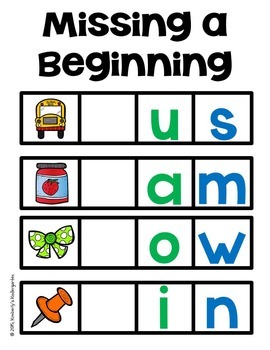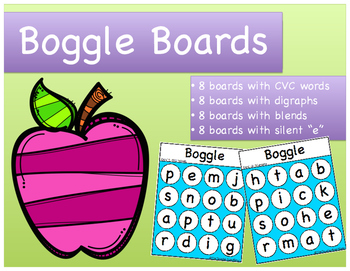Cvc Words With Digraphs
Have you ever heard the term "cvc words with digraphs" and wondered what it meant? You're not alone. Many people are unfamiliar with this important concept in the English language, but it's essential for literacy development. In this blog post, we will explore the basics of cvc words with digraphs and why they are crucial for reading and writing proficiency.
The Pain Points of CVC Words with Digraphs
Learning to read and write in English can be a challenging task, especially for children. One of the most significant obstacles is understanding the rules governing cvc words with digraphs. These words are made up of three letters, where the first two letters form a consonant digraph, and the last letter is a vowel. For example, the word "ship" has a "sh" digraph and the vowel "i." The use of digraphs in cvc words can be challenging because they require students to not only recognize individual letters but also understand how they combine to form sounds.
What are CVC Words with Digraphs?
CVC words with digraphs are an essential component of phonics instruction in teaching children to read. As mentioned earlier, cvc words with digraphs contain three letters that include a consonant digraph and a vowel. The digraphs “ch,” “sh,” “th,” and “wh” are the most common types in cvc words with digraphs. Teaching students to recognize and read cvc words with digraphs is critical for their language development and overall success in reading and writing.
Main Points
By teaching children the sounds that differ from regular consonants and vowels, we can help them read more fluently. This understanding enables children to read and comprehend cvc words with digraphs and, eventually, more complex texts. Recognizing and reading cvc words with digraphs is also beneficial in building vocabulary, stimulating reading comprehension, and improving academic performance.
Personal Experience with CVC Words with Digraphs
As a teacher who specializes in early childhood education, I have encountered many young language learners struggling with cvc words with digraphs. For instance, some children may pronounce "ship" as "sip" because they have not grasped the “sh” digraph sound. To teach cvc words with digraphs more effectively, I use manipulatives and other multisensory activities that engage young children in the learning process.

Tips for Teaching CVC Words with Digraphs
When teaching cvc words with digraphs, it's essential to provide students with explicit instruction and multiple opportunities to practice. Teachers can use phonics games, writing activities, and small group instruction to engage students in the learning process. Additionally, teachers can incorporate digital resources, such as interactive whiteboards and online games and activities, that provide students with visual and auditory cues to help them recognize cvc words with digraphs.

Mastering CVC Words with Digraphs
For students to become proficient in cvc words with digraphs, they need repeated practice and reinforcement. Parents can help by practicing with children at home using flashcards, memory games, and other activities that reinforce the sounds of digraphs. It's essential to remember that learning cvc words with digraphs takes time and patience but can lead to long-term academic success.
Importance of CVC Words with Digraphs
CVC words with digraphs are an essential building block for early literacy. They are a key component in teaching children foundational reading skills and in understanding how language works. As children move past cvc words with digraphs, they can gain the necessary skills to decode complex texts and communicate effectively. By creating opportunities for children to learn cvc words with digraphs, we are setting them up for lifelong academic success.
Question and Answer
Q: Why are cvc words with digraphs important for literacy development?
A: CVC words with digraphs provide a strong phonemic foundation to build upon as students learn to read and write. These words help students recognize that letters can have different sounds, which is essential for decoding new words.
Q: How can I help my child master cvc words with digraphs?
A: One great way to help your child master cvc words with digraphs is by using flashcards and other games to practice reading and writing. You can also find a variety of online resources that provide practice with these words.
Q: What are some common digraphs used in cvc words?
A: The most common digraphs used in cvc words are “ch,” “sh,” “th,” and “wh.”
Q: What are some benefits of learning cvc words with digraphs?
A: Learning cvc words with digraphs provides students with the tools they need to build their vocabularies, improve reading comprehension, and succeed academically.
Conclusion
Understanding and mastering cvc words with digraphs are essential for literacy development and long-term academic success. By providing explicit instruction and engaging students in the learning process through multisensory instruction, parents and teachers can support children as they learn essential reading skills. With practice and reinforcement, children can gain mastery over cvc words with digraphs, setting them up for a lifetime of successful communication and learning.
Gallery
CVC Words: Phonics Worksheet

Photo Credit by: bing.com / cvc phonics worksheet liveworksheets
Word Work: Boggle Boards (CVC Words, Digraphs, Blends, And Silent "e")

Photo Credit by: bing.com / boggle silent digraphs cvc blends boards words word work
Clothespin Card MEGA Bundle. CVC Words, Digraphs, Sounds + Elkonin Boxes

Photo Credit by: bing.com / cvc digraphs bundle elkonin sounds clothespin mega boxes words card preview
Download Phonics CVC Words Worksheets And Use Them In Class Today. On

Photo Credit by: bing.com / cvc phonics games4esl
Pin By FirstStepReading.com On Free Worksheets And Classes

Photo Credit by: bing.com / cvc
